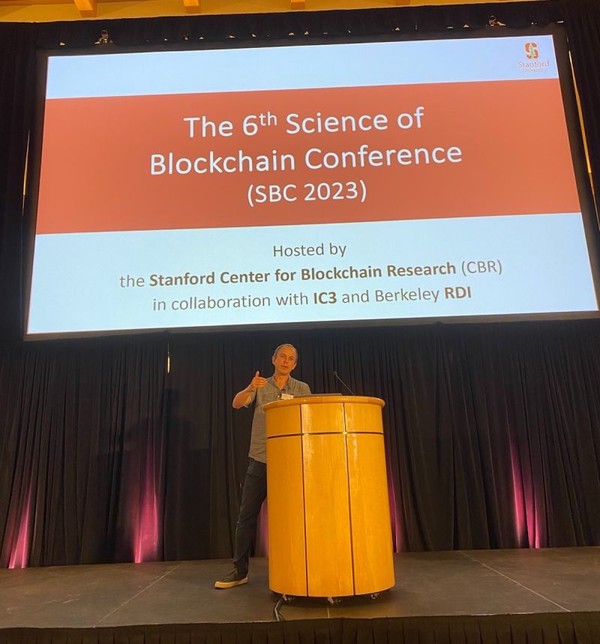The Science of Blockchain Conference 2023
The Science of Blockchain Conference 2023 (SBC'23) was jointly organized by the Stanford Center for Blockchain Research (CBR), IC3, and Berkeley RDI. It took place at the Arrillaga Alumni Center, Stanford University from August 28 to 30. This event highlighted significant technical advancements in the blockchain ecosystem and brought together leading researchers and practitioners. It featured in-depth discussions on the application of cryptography, decentralized protocols, formal methods, and empirical analysis — all aimed at boosting the security and scalability of blockchain technologies. The conference was designed to foster collaboration and cross-disciplinary exchange among experts specializing in blockchain protocol development, cryptography, distributed systems, secure computing, crypto-economics, and economic risk analysis, further enriching this dynamic field.
Lukas Aumayr presented “Sleepy Channels,” a new solution to cryptocurrency scalability issues, developed in collaboration with Sri AravindaKrishnan Thyagarajan, Giulio Malavolta, Pedro Moreno-Sanchez, and Matteo Maffei. This Bitcoin-compatible bi-directional payment channel protocol operates without the need for watchtowers — third parties traditionally employed to monitor blockchain transactions to prevent fraud during periods when users are offline.
Conventional payment channels face a significant challenge: both parties involved must continuously monitor the blockchain to detect and react to any outdated transactions posted by the other party. This requirement for constant vigilance can be exploited by malicious actors during disruptions like power outages. Watchtowers were introduced as a mitigation strategy, tasked with monitoring the blockchain on behalf of offline users. However, this solution has drawbacks, either requiring a trust-dependent model or the impractical locking up of large sums as collateral.
“Sleepy Channels” eliminates the need for watchtowers by confining the time during which payment channel updates must be validated to a specific, short window. This approach incentivizes participants to remain online during this window by requiring them to lock in collateral, which is returned more quickly if they comply. Compatible with blockchains that can verify digital signatures, such as Bitcoin, this protocol has been shown through experimental results to manage communication and computation overhead comparably to existing protocols while eliminating the need for costly watchtower services.

